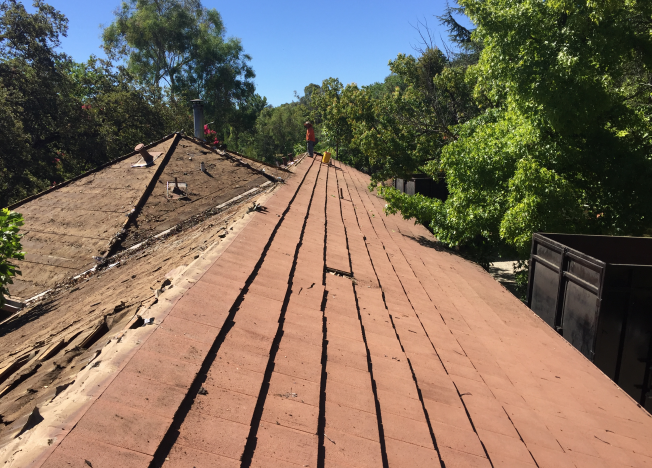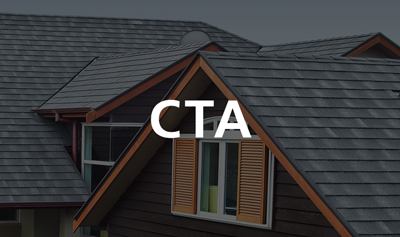Can the age, type and color of a roof directly impact the temperature of a home? Absolutely.
Energy efficiency and energy saving being a top concern for homeowners across the US, especially in areas that see temperatures well over 100+ degrees in the summer months. One overlooked area that contributes to home comfort and temperature is the roof.
In fact, there are several factors that can contribute to the amount of heat or energy a roof will absorb including the color, material, age and type of insulation.
The Tilcor team recently had the opportunity to work with homeowners in California who chose to go with a Tilcor stone coated steel roof instead of concrete tile. Read on to see the benefits and how changing the roof material reduced temperatures by 44 degrees!
This failing old concrete tile was ready to be replaced. Jeff and Sharon purchased the home which was built in 1983. Eight years ago they began having problems with leaks. Cal Vintage Roofing recommended keeping the roof and coating it which should last 15 years.
The coating started failing after seven years so they started researching their options. Jeff and Sharon contacted Cal Vintage Roofing to see if there was any warranty. No warranty but they would discount a new $36,000.00 stone coated Gerard roof. Jeff and Sharon contacted Ironstone Roofing for a quote.
During the sales presentation Joe Wagner discovered the home was warm in the summer and cold in the winter. The entire home had vaulted ceilings with no ability to add additional insulation because there isn't any attic space. Joe recommended using Sol-R-Skin under Tilcor Craftsman Shake. Jeff and Sharon liked that idea and signed the contract.
Prior to the old roof being removed Dermot Ennis from International Insulation and I visited the home to conduct Flir Thermal testing. The outside temperature was 82 degrees, when we took thermal testing in the attic we had hot spots as high as 136 degrees in many locations.
After the Sol-R-Skin and Craftsman shakes was installed we went back to take readings in the same locations. The outside temperature was 88 degrees. Six degrees warmer than the day we tested concrete. The highest attic temperature reading was only 92 degrees. More importantly, it was 44 degrees cooler than the concrete tile roof on a day that was 6 degrees warmer.
Jeff and Sharon told us the home was much cooler over the weekend when temperatures got as high as 105 degrees. Their air conditioning barely turned on on those hot days.










